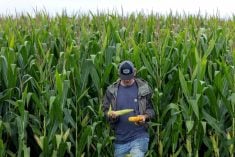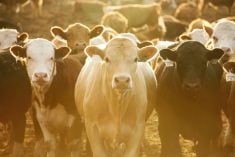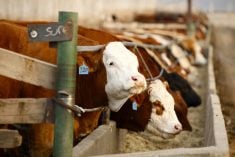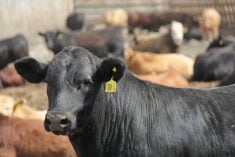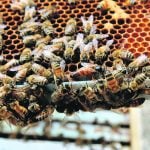Average prices for steer and heifer calves jumped $8-$10 this past week with some buyers reporting values as much as $15 above week-ago levels. Feedlot operators could feel it in their bones earlier in November and there were no strings attached on orders flowing across the Prairies. Favourable weather reinforced the narrow premium of weaned calves over unweaned. The forecast for colder snowy conditions further spurred on the “just get’ em now” orders. Average Alberta fed cattle prices reached $140, the highest level since mid-August. Feeding margins are now near break-even pen closeouts and feedlots can finally pencil a profit, which hasn’t occurred for about 15 months.
Read Also

China rapeseed meal futures see largest one-day gain in almost three months after Xi–Carney talks
China’s most active Zhengzhou rapeseed (canola) meal futures posted their largest daily gain in nearly three months on Monday, after Canadian Prime Minister Mark Carney and Chinese President Xi Jinping met in South Korea last week without securing a breakthrough on tariffs.
Mixed unweaned steers averaging 500 lbs. were readily trading from $190 to $193 in Alberta and Saskatchewan with larger-frame batches reaching $197. Mixed heifers of similar weight actively traded from $168 to as high as $175 in Alberta, with Saskatchewan and Manitoba values averaging about $5 less. Larger-frame semi-weaned steers averaging 600 lbs. were quoted $192 landed in southern Alberta but similar-quality cattle were commonly quoted from $188 to $194 in southern Saskatchewan and Manitoba. Yearlings were not the focus this week, given the limited volumes, so price gains were not as defined in the heaver weight categories. Small batches of higher-quality larger-frame steers averaging 850 to 900 lbs. were trading from $160 to $168.
Coming events can cast their shadows beforehand and Friday’s Cattle on Feed report from the U.S. Department of Agriculture was considered friendly for the market. October placements came in below expectations at 95 per cent of year-ago levels while Nov. 1 on-feed numbers were down one per cent. U.S. feeder cattle markets were trading $8-$12 above week-ago levels and the weaker Canadian dollar enhanced interest from south of the border, especially in Manitoba.
— Jerry Klassen is manager of the Canadian office for Swiss-based grain trader GAP SA Grains and Produits. He is also president and founder of Resilient Capital, which specializes in proprietary commodity futures trading and commodity market analysis. Jerry owns farmland in Manitoba and Saskatchewan but grew up on a mixed farm/feedlot operation in southern Alberta, which keeps him close to the grassroots level of grain and cattle production. Jerry is a graduate of the University of Alberta. He can be reached at 204-504-8339.




